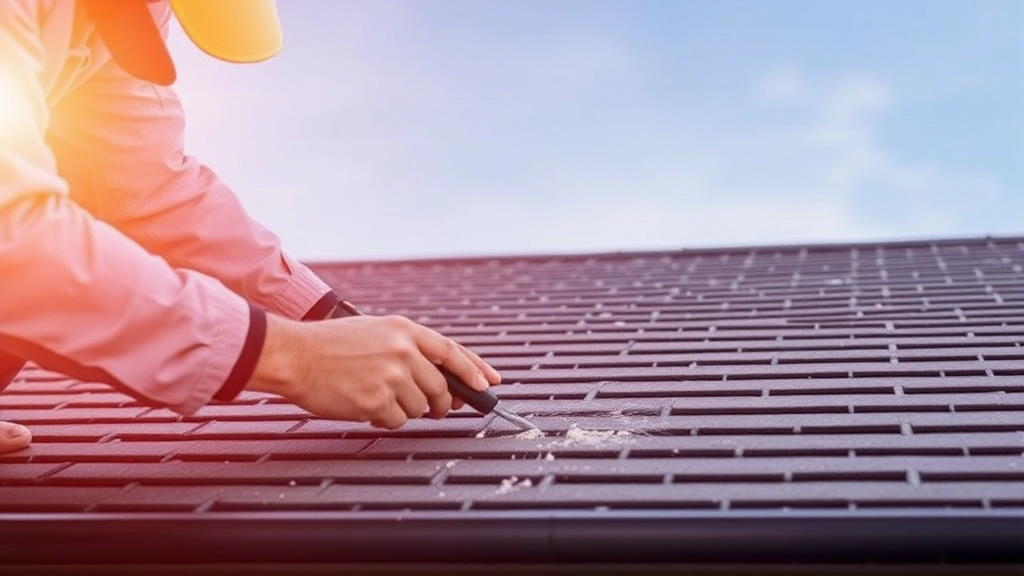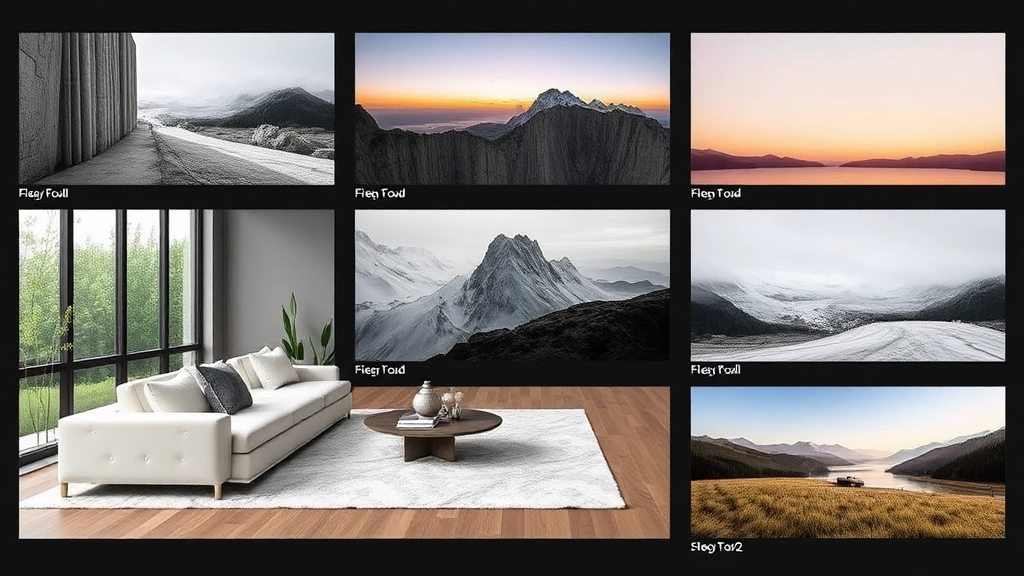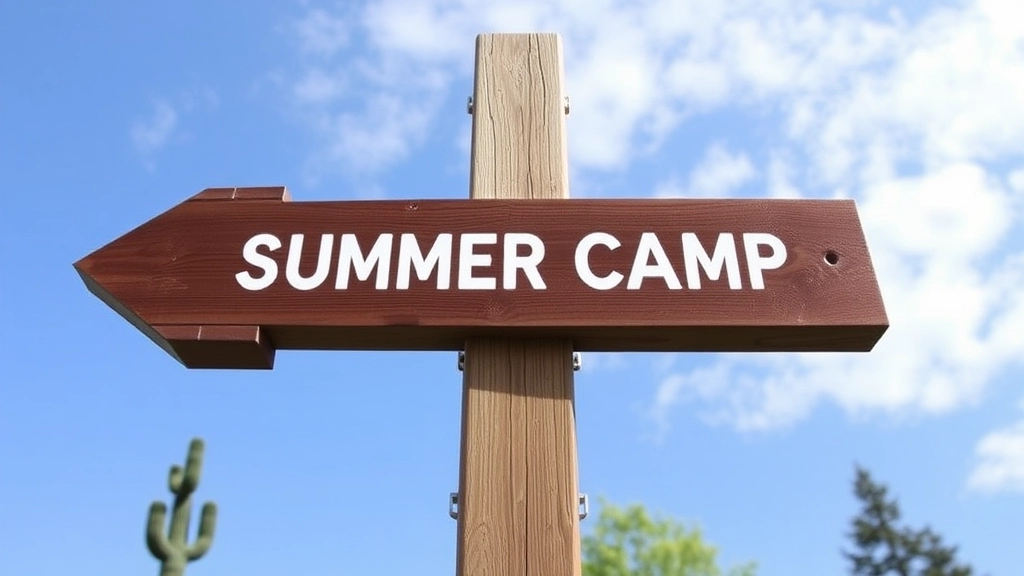Designing a Summer Camp Arrow Signpost
Ever tried finding your way around a summer camp without clear signs? It’s like looking for a needle in a haystack, right? That’s why designing a Summer Camp Arrow Signpost is crucial. It’s not just about pointing the way; it’s about creating a welcoming and organized environment. In this article, we’ll explore everything from the materials needed and step-by-step crafting guide to creative personalization ideas and safety tips for installation. Whether you’re working with a tight budget or aiming for a high-end look, we’ve got you covered.
Creating a Welcoming Environment
Imagine a beautifully crafted signpost guiding campers effortlessly through their summer adventures. We’ll dive into tips for placement and visibility, ensuring your signposts stand out and are easily readable. Learn how to maintain and weatherproof your creations to keep them looking fresh all season long. Plus, get inspired by real-life examples and design ideas that will make your signposts not just functional, but also a charming part of your camp’s landscape.
Get Started!
Ready to make your summer camp arrow signpost a standout feature? Let’s get started!
Designing a Summer Camp Arrow Signpost
Ever tried finding your way around a summer camp without clear signs? It’s like looking for a needle in a haystack, right? That’s why designing a Summer Camp Arrow Signpost is crucial. It’s not just about pointing the way; it’s about creating a welcoming and organised environment.
Why Arrow Signposts Matter
- Directional Clarity: Kids and parents need to know where they’re headed. An arrow signpost solves this.
- Camp Aesthetics: A well-designed signpost adds to the camp’s charm.
- Safety: Clear directions reduce the risk of kids wandering off.
What Makes a Good Arrow Signpost?
- Visibility: It should be easy to spot from a distance.
- Durability: Weather-resistant materials are a must.
- Simplicity: Keep the design straightforward. No one wants to squint to read a sign.
Steps to Design Your Arrow Signpost
- Sketch Your Design: Start with a rough sketch. Think about the colours, fonts, and overall look.
- Choose Your Materials: Wood, metal, or plastic? Each has its pros and cons.
- Pick the Right Colours: Bright, contrasting colours work best. Think yellow on blue or white on green.
- Decide on the Arrow Shape: Classic arrow, modern geometric, or something whimsical?
Real-Life Example
When I was at Camp Pinewood, we had these rustic wooden arrow signposts. They were painted in bright colours and had fun, quirky fonts. Kids loved them, and parents found them super helpful.
Quick Tips
- Use Bold Fonts: Easy to read from afar.
- Add Icons: A little tent icon for the campsite or a book for the library makes it even clearer.
- Weatherproofing: A coat of sealant can do wonders.
For more ideas on how to enhance your camp’s environment, check out our Summer Camp Canteen Setup guide. Additionally, if you’re looking to create a memorable experience for the kids, you might find inspiration in our Summer Camp Culture and Activities article.
Materials Needed for Crafting

Alright, let’s talk materials. You want to create a killer summer camp arrow signpost, right? But you’re probably wondering, “What do I need to get started?” I got you.
Basic Essentials
First, let’s cover the basics. You can’t build anything without the right tools and materials. Here’s your shopping list:
- Wooden Planks: These will be your arrows. Go for something sturdy.
- Paint: Bright colours to make those signs pop.
- Paintbrushes: Different sizes for detailing.
- Stencils: For neat lettering.
- Screws and Nails: To hold everything together.
- Hammer and Screwdriver: Basic tools, but essential.
- Sandpaper: Smooth out those rough edges.
- Sealant: To protect your masterpiece from the elements.
Optional Add-Ons
Want to go the extra mile? Consider these extras:
- Decorative Elements: Think stickers, glitter, or even small lights.
- Weatherproofing Spray: For added durability.
- Post: If you’re not mounting it on a tree or wall, you’ll need a sturdy post.
Where to Get Your Supplies
You can find most of these at your local DIY store. Or, go online for more variety.
Pro Tips for Shopping
- Quality Over Quantity: Invest in good-quality paint and wood.
- Eco-Friendly Options: Consider sustainable materials.
- Bulk Buying: If you’re making multiple signs, buy in bulk to save money.
Real-Life Example
Last summer, we had a camp that used old barn wood for their signs. Not only did it look rustic and cool, but it was also a great way to recycle.
Step-by-Step Guide to Creating Signposts
Ever wondered how to make a killer signpost for your summer camp? Let’s dive in. You don’t need to be a DIY whiz to pull this off. Here’s a straightforward, step-by-step guide to creating signposts that’ll make everyone stop and stare.
Step 1: Gather Your Materials
Before you even think about putting anything together, make sure you have all the materials you need. Here’s a quick checklist:
- Wooden planks or arrows
- Paint and brushes
- Stencils (for those of us who aren’t artists)
- Screws and a screwdriver
- A sturdy post
- Sandpaper
Step 2: Sanding the Wood
Nobody likes splinters. Start by sanding the wooden planks or arrows to get a smooth surface. This will not only prevent injuries but also make painting easier. Trust me, you don’t want to skip this step.
Step 3: Painting the Arrows
Here’s where you can get creative. Choose vibrant colours that stand out. Use stencils if you want clean, sharp letters. Let each coat dry before adding another to avoid smudging.
Step 4: Attaching the Arrows to the Post
Once your arrows are dry, it’s time to attach them to the post. Use screws to secure each arrow firmly. Make sure they’re pointing in the right direction; you don’t want to send campers on a wild goose chase.
Step 5: Sealing the Deal
To make your signpost weather-proof, apply a sealant. This will protect the paint and wood from rain, sun, and all the elements. A little effort here can save you a lot of maintenance work later.
Step 6: Installation
Find a good spot to install your signpost. It should be visible from a distance and in a location where people naturally look for directions. Dig a hole deep enough to hold the post steady, then fill it in with dirt or concrete.
Final Touches
Double-check everything. Make sure the arrows are secure and pointing correctly. A wobbly signpost is a no-go.
Quick Tips for Success
- Use high-contrast colours: This makes the signpost easier to read.
- Keep it simple: Don’t overcrowd your arrows with too much information.
- Test it out: Walk around and see if the signpost is easily visible from different angles.
Common Worries and How to Address Them
- “What if it falls over?” Make sure your post is deep enough in the ground. Use concrete if necessary.
- “What if the paint fades?” Use weather-resistant paint and a sealant.
- “What if I’m not good at painting?” Stencils are your best friend here. They make everything look pro.
Creating a summer camp arrow signpost doesn’t have to be complicated. Follow these steps, and you’ll have a functional and eye-catching signpost in no time. For more inspiration on camp setups, check out our summer camp canteen setup guide and learn about cabin bunk safety and design tips.
Creative Ideas for Personalization

Worried your summer camp arrow signposts will blend into the background?
Let’s make them pop!
Personalizing your signposts can add that special touch and make navigation fun for everyone.
Here’s how you can do it:
Colour Schemes and Themes
- Camp Colours: Use the camp’s colours for a cohesive look.
- Seasonal Themes: Bright, warm colours for summer vibes.
- Nature-Inspired: Greens, browns, and blues to blend with the outdoors.
Custom Shapes and Designs
- Arrow Shapes: Don’t just stick to the standard arrow. Try zigzags, wavy lines, or even animal shapes.
- Engraved Designs: Use a wood burner to add intricate designs or camp logos.
Fun Fonts and Textures
- Hand-Painted Letters: Adds a personal touch and rustic charm.
- Stencil Fonts: For a clean, professional look.
- Textured Paint: Use sand or glitter for a tactile experience.
Interactive Elements
- Chalkboard Sections: Let campers leave messages or draw.
- Magnetic Boards: Change directions or messages easily.
- Solar Lights: Light up the path at night.
Incorporate Nature
- Tree Branches: Use real branches as part of the signpost structure.
- Flower Boxes: Attach small boxes and plant seasonal flowers.
- Rock Bases: Secure the post in a decorative rock base.
Camper Contributions
- Handprints: Let campers add their handprints in paint.
- Artwork: Frame camper drawings or paintings on the signpost.
- Names: Include the names of campers who helped make the sign.
Storytelling Elements
- Camp History: Add snippets of camp history or fun facts.
- Quotes: Inspirational quotes or camp mottos.
- Maps: Mini-maps showing the layout of the camp.
Weatherproofing
- Sealants: Use a clear sealant to protect your designs from the elements.
- Waterproof Paints: Ensure your colours stay vibrant, rain or shine.
- UV Protection: Prevent fading with UV-resistant coatings.
Recycled Materials
- Old Signs: Repurpose old camp signs for a vintage feel.
- Scrap Wood: Use leftover wood pieces for a rustic look.
- Bottle Caps: Create mosaic designs with bottle caps.
Tech Integration
- QR Codes: Link to camp schedules or fun facts.
- Speakers: Play camp songs or nature sounds.
- LED Displays: Change messages easily with programmable LEDs.
Personalizing your summer camp arrow signposts is all about creativity and making the camp experience unique.
From colours to camper contributions, the possibilities are endless.
And remember, the keyword here is personalization.
Make your signposts a reflection of your camp’s spirit and watch them become a beloved part of the landscape.
Placement and Visibility Tips
Are you worried that your summer camp arrow signposts might go unnoticed? Let’s tackle that head-on and make sure your signs are as visible and effective as they can be.
Why Placement Matters
The placement of your signposts is crucial. You can have the most beautifully crafted sign, but if it’s hidden behind a tree or too high up, it’s useless. Visibility is key.
Strategic Placement Tips
Here are some straightforward tips to ensure your signposts are in the right spot:
- High Traffic Areas: Place signs where campers naturally gather or pass by frequently, like near the dining hall, main entrance, or activity areas.
- Eye Level: Keep the signs at eye level for easy reading. Typically, this means around 4 to 5 feet off the ground.
- Clear Paths: Ensure the signs are along clear paths without obstructions. Avoid placing them where they might be hidden by foliage or other structures.
- Lighting: Consider the lighting. If your camp has activities after dark, ensure the signs are visible at night. Use reflective paint or install small solar lights to highlight them.
- Angles and Arrows: Make sure the arrows on your signposts point in the exact direction of the destination. An off-angle can lead to confusion.
Enhancing Visibility
To make your signposts stand out even more, try these tricks:
- Bold Colours: Use bright, contrasting colours that catch the eye. Think neon green on black or bright yellow on blue.
- Large Fonts: Go big with your fonts. The text should be readable from a distance. No one wants to squint to read a sign.
- Simple Graphics: Incorporate simple, universally understood graphics. A tent icon for camping areas, a fork and knife for dining areas â you get the idea.
- Consistent Design: Keep the design consistent across all signs. This helps create a visual language that becomes easy for campers to follow.
Real-Life Example
Imagine you’re at a summer camp and you’re trying to find the lake for a swim. You see a brightly coloured sign with a large, clear arrow pointing the way. It’s at eye level, easy to spot, and you can read it from a distance. No confusion, no wandering around. That’s the power of good placement and visibility.
For more tips on enhancing your camp’s setup, check out our cabin and bunk safety and design tips and learn how to create a successful summer camp canteen setup.
Maintenance and Durability Considerations

Ever worried about your summer camp arrow signpost falling apart mid-season?
It’s a real concern.
Let’s keep these signposts standing tall and looking sharp all summer long.
Why Maintenance Matters
You want your signpost to last, right?
Here’s how we do it:
- Weatherproofing: Use paint or sealant to protect against rain and sun.
- Sturdy Materials: Opt for wood or metal that can handle the elements.
- Regular Checks: Inspect for any damage or wear and tear weekly.
Durability Tips
Here’s the deal.
You need your signpost to survive the season.
So, let’s break it down:
- Choose Quality Paint: Go for outdoor-grade paint. It sticks around.
- Reinforce Joints: Use screws instead of nails. They hold better.
- Anchor It Well: Ensure it’s firmly planted. No wobbling allowed.
Real-Life Example
I once had a signpost that collapsed after a storm.
Lesson learned.
Now, I always use waterproof sealant and it’s been rock solid since.
Keep It Fresh
Nobody wants a shabby signpost.
- Repaint Annually: Keeps it looking fresh and vibrant.
- Clean Regularly: Wipe off dirt and grime.
Safety Tips for Installation
Alright, so you’ve got your summer camp arrow signpost ready, but how do you install it safely? This is crucial because the last thing you want is a signpost toppling over and causing injuries. Let’s dive into some practical, no-nonsense safety tips for installation.
Real Concerns You Might Have
- Will the signpost stay upright?
- Is it safe for the kids around?
- How do I ensure it doesn’t fall in bad weather?
Key Safety Tips
- Choose a Stable Base
- Concrete Footing: If you’re placing the signpost in a permanent spot, consider using concrete to secure the base. It’s rock-solid and won’t budge easily.
- Weighted Base: For temporary setups, use a weighted base. Sandbags or heavy-duty metal bases work well.
- Proper Anchoring
- Ground Stakes: Use long, sturdy stakes to anchor the signpost into the ground. Make sure they’re driven in at an angle for extra stability.
- Bolts and Screws: If you’re attaching the signpost to a wooden platform or another structure, use heavy-duty bolts and screws. Double-check that they’re tightly fastened.
- Height and Visibility
- Correct Height: Ensure the signpost is at a height where it’s easily visible but not so high that it becomes unstable. Around 5-6 feet is usually a good range.
- Reflective Tape: Add reflective tape or paint to make the signpost visible at night. This is especially important for camps that run evening activities.
- Weather-Proofing
- Sealants: Use weather-proof sealants to protect the signpost from rain and moisture. This will prevent the wood from rotting or the paint from peeling.
- Wind Resistance: If you’re in a windy area, consider using guy wires to secure the signpost. These wires provide additional support and prevent it from swaying.
- Regular Inspections
- Weekly Checks: Make it a habit to inspect the signpost weekly. Look for any signs of wear and tear, loose bolts, or instability.
- Immediate Repairs: If you notice any issues, fix them immediately. Don’t wait until it becomes a safety hazard.
Real-Life Example
Last summer, we had a camp where the signpost was installed near the main activity area. One windy night, it started leaning dangerously. Luckily, we had anchored it with both ground stakes and guy wires, so it didn’t fall. The next morning, we reinforced it with additional stakes and it stayed put for the rest of the season. Lesson learned: always over-prepare!
For more tips on creating a safe and enjoyable camp environment, check out our guide on charter bus tips for a perfect summer camp trip and our article on summer camp activities that combine fun and learning.
Inspiring Examples and Design Inspiration

Ever stood in front of a blank signpost and thought, “How do I make this look amazing?”
Yeah, me too.
Creating a summer camp arrow signpost doesn’t have to be a drag.
Let’s dive into some killer ideas that’ll spark your creativity.
Why Inspiration Matters
First off, why even bother with inspiration?
Because a well-designed signpost can:
- Set the vibe for your camp
- Help kids and parents navigate easily
- Make your camp look more professional
Real-World Examples
1. Rustic Wood Signposts
Imagine this: Rough, weathered wood with hand-painted arrows.
Perfect for that outdoorsy, back-to-nature feel.
2. Colour-Pop Arrows
Bright, bold colours.
Think neon greens, blues, and pinks.
These grab attention and are super easy to spot from a distance.
3. Themed Signposts
Got a pirate-themed camp?
How about arrows shaped like treasure maps?
Or a space camp with rocket-shaped signs?
Getting Personal
Personal touches make a big difference.
Here are some ideas:
- Kids’ Handprints: Let the campers leave their mark.
- Camp Mascot: Add a small figure or drawing of your camp’s mascot.
- Quotes: Inspirational quotes can make your signpost not just functional, but motivational.
Crafting Stories
Let me share a quick story.
Last summer, I saw a camp that used old skis for their signposts.
Each ski was painted with different trail names.
It was quirky, memorable, and super effective.
Pro Tips
- Mix materials: Combine wood, metal, and paint for a unique look.
- Use stencils: For clean, professional lettering.
- Weatherproof: Seal your signposts to make them last longer.
Wrapping It Up
Inspiration is everywhere.
From rustic vibes to neon pops, the sky’s the limit.
So, what’s stopping you?
Get out there and create a signpost that not only points the way but also tells a story.
Got any cool ideas?
Share them in the comments below!
Need more tips on crafting and placement?
Check out our guide on Step-by-Step Guide to Creating Signposts.
Keep it real, keep it fresh, and make those signposts shine!
Cost-Effective Options for Budget Camps
Got a tight budget for your summer camp and still want to make it awesome?
You’re in the right place.
Let’s dive into some cost-effective options for creating those killer arrow signposts without breaking the bank.
Why Are Cost-Effective Signposts Important?
Budget constraints are a real concern for many camps.
But you still need to make sure your campers can find their way around.
Plus, a well-designed signpost can add a touch of charm to your camp.
So, let’s get creative without spending a fortune.
Materials You Can Use
First off, let’s talk materials.
You don’t need to go fancy.
Here’s a list of budget-friendly options:
- Recycled wood: Old pallets or scrap wood can be turned into rustic signposts.
- Cardboard: Thick, sturdy cardboard can be surprisingly durable if treated right.
- PVC pipes: Lightweight and easy to work with.
- Paint and markers: Basic, but effective for adding that pop of colour.
Step-by-Step Guide for Budget Signposts
- Gather Your Materials: Look around. What do you already have? Old wood, leftover paint?
- Cut and Shape: Use simple tools like a hand saw or box cutter.
- Paint and Decorate: Go wild with colours. Use stencils if you’re not confident with freehand.
- Assemble: Glue or nail your pieces together. PVC pipes can be connected with simple fittings.
Personalisation on a Budget
Want to make it personal?
Here are some low-cost ideas:
- Stencils: Create stencils for consistent lettering.
- Nature Elements: Use leaves, twigs, or stones for decoration.
- Campers’ Contributions: Get the kids to add their own touches. It’s fun and free!
Placement and Visibility Tips
Even on a budget, placement is key.
- High-Traffic Areas: Place signposts where campers naturally gather.
- Height: Make sure they’re at eye level for easy reading.
- Contrast: Use contrasting colours to ensure visibility.
Maintenance and Durability
You want these signs to last, right?
Here’s how to make them durable:
- Sealants: A coat of sealant can protect your signs from the elements.
- Regular Checks: Inspect and touch up as needed.
Safety Tips for Installation
Safety first, folks.
- Stable Base: Ensure your signposts are securely anchored.
- Smooth Edges: Sand down any rough edges to prevent injuries.
Inspiring Examples
Check out these cool ideas:
- A camp used old skis as signposts. Unique and cost-effective!
- Another camp painted rocks with directions. Super simple, yet effective.
For more creative ideas on how to set up your camp, check out our summer camp canteen setup tips and our guide to fun and learning combined activities.
FAQs on Creating a Summer Camp Arrow Signpost
What materials do I need to create a summer camp arrow signpost?
You will need wooden planks, paint, paintbrushes, stencils, screws and nails, a hammer and screwdriver, sandpaper, and sealant. These are the basic essentials to get started.
Are there any optional materials that can enhance my signpost?
Yes, you can consider adding decorative elements like stickers, glitter, or small lights, weatherproofing spray, and a sturdy post if you’re not mounting it on a tree or wall.
Where can I purchase the necessary supplies?
You can find most supplies at your local DIY store or shop online for a greater variety. Remember to invest in good-quality materials for the best results.
How can I personalize my summer camp arrow signposts?
Personalization can be achieved through various methods such as using camp colours, seasonal themes, custom shapes, fun fonts, and interactive elements like chalkboard sections or solar lights. The key is to make your signposts reflect the camp’s spirit.
What are some creative ideas for signpost designs?
You can experiment with different colour schemes, custom shapes, hand-painted letters, engraved designs, and textured paint. Incorporating nature with tree branches, flower boxes, or rock bases can add a unique touch.
How do I ensure my signpost is durable and weatherproof?
Use weatherproofing techniques such as applying sealants and waterproof paints, choosing sturdy materials like wood or metal, and performing regular checks for any damage. Reinforcing joints with screws instead of nails and anchoring the signpost well are also essential for durability.
Can I involve campers in the creation of the signposts?
Absolutely! Campers can contribute by adding their handprints, artwork, or names to the signpost. This not only makes the signpost unique but also creates a sense of ownership and pride among the campers.
How can I maintain the signpost throughout the camp season?
Regular maintenance includes repainting annually to keep it looking fresh, cleaning off dirt and grime, and inspecting for any wear and tear. These steps will ensure your signpost remains in top condition.
What are some inspiring examples of well-designed signposts?
Examples include rustic wood signposts with hand-painted arrows, colour-pop arrows in bright neon colours, and themed signposts like treasure map arrows for a pirate-themed camp. Personal touches like campers’ handprints or camp mascots can also add charm.
Why is it important to draw inspiration for your signpost design?
A well-designed signpost sets the vibe for your camp, helps with navigation, and enhances the camp’s professional appearance. Drawing inspiration ensures your signpost is both functional and visually appealing.
What are some pro tips for creating an effective signpost?
Mix materials like wood and metal for a unique look, use stencils for clean lettering, and always weatherproof your signposts to increase their longevity. These tips will help you create a standout signpost.
Can I use recycled materials for my signpost?
Yes, using recycled materials like old signs, scrap wood, and bottle caps can give your signpost a rustic and eco-friendly look. It’s a great way to be creative while being environmentally conscious.
How can I integrate technology into my signpost?
Consider adding QR codes that link to camp schedules, speakers that play camp songs or nature sounds, and LED displays for easily changeable messages. These tech integrations can make your signpost interactive and modern.
References
-
How to Make a Wooden Arrow Sign
-
20 Ways to Decorate Your Camp
-
How to Make a Wooden Sign

